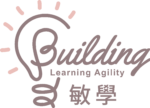Why reflection?
Reflection is such a crucial skill for students. I did a very quick key word search by typing #reflect in all MYP subject guides and also DP EE, CAT and ToK guides. The results include the following words, reflect, reflection, and reflective. It is so clearly that we absolutely need to teach students how to reflect if we expect them to complete the core elements in the MYP and DP successfully.
Learning portfolio or process journal?
Our dilemma is that teachers all understand and acknowledge the importance of giving time for students to reflect. But there are still some resistance from teachers and students to allocate time for reflection and use the learning portfolio to document the learning journey. One misunderstanding I have found is that teachers and students perceive learning portfolio as showcase portfolio. Students only reflect at the end of the unit and select their best work instead of collecting learning evidence and reflect critically on why they learn, how they learn and what they learn along the way. Another problem comes after this is that students are asked to reflect on all of their subject learning pretty much at the same time because our units start and end roughly at the same time. If I were a student, I certainly would not enjoy this experience. I have been thinking perhaps we should not call it learning portfolio, but instead, we should name it learning process journal, just the way we expect grade 10 students to document their process of making their personal project?
Negative brainstorming
- How can we ensure that teachers NEVER allocate time to the learning portfolio?
- How can we ensure that students NEVER want to reflect in their learning portfolio?
This is my first time using negative brainstorming method and it is very powerful. What a great way to generate negative user experiences and think backwards to solve the problem! Here are the ideas generate by our teachers.
It is very clear that students and teachers want to know the purpose of keeping a learning portfolio. What’s interesting is that teachers do not want to spend time to grade or provide feedback to the student learning portfolio, but meanwhile, they also recognize that students will not want to keep a learning portfolio when there is no feedback and audience. Another issue is also true that in my school, only MYP students keep learning portfolios, but DP students are not. It goes back to the high-stakes DP exams and the heavy content leaves no room for anyone to reflect.
As a school, our next step will be to identify possible solution to solve the problems and ensure a positive user experience.


